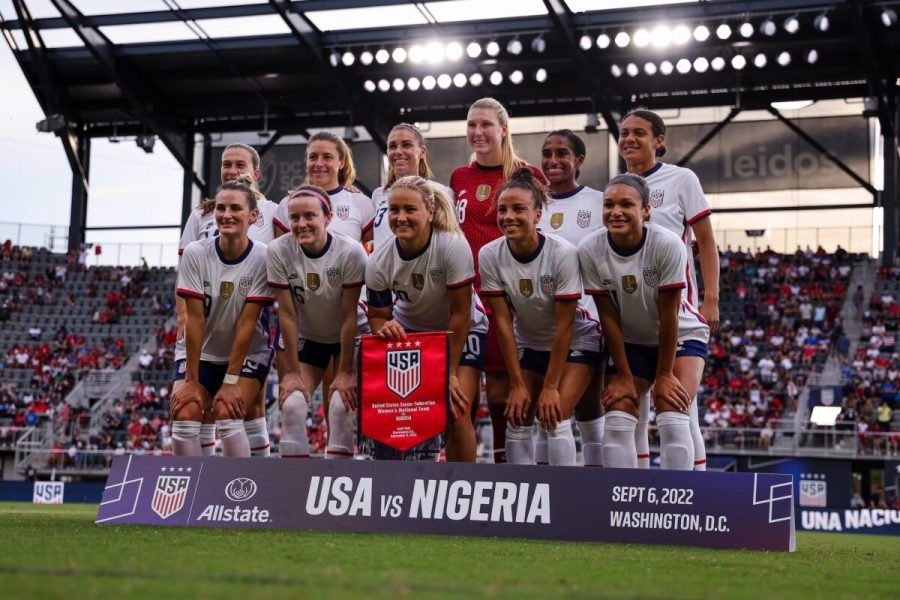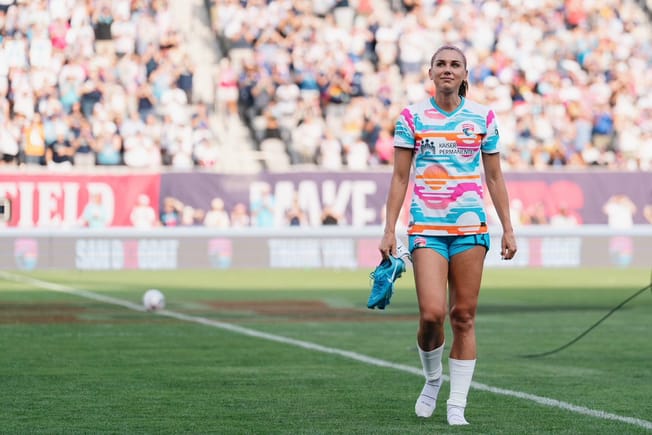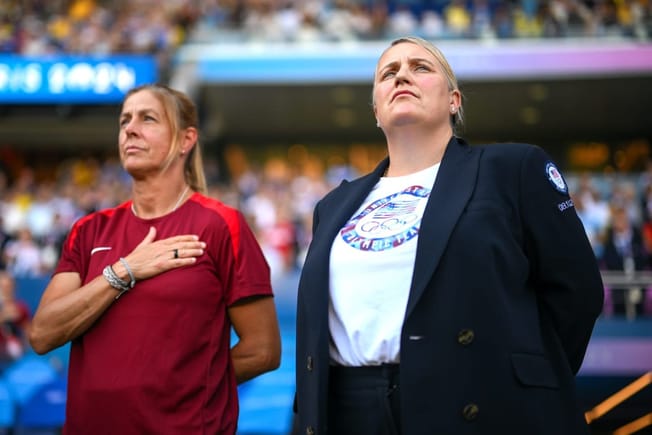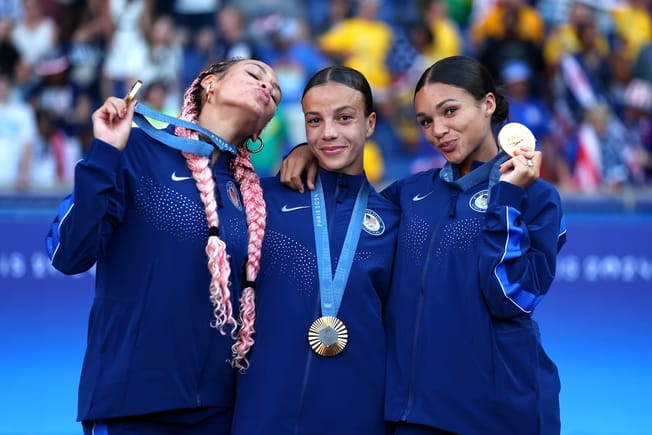Quick Hits
- The U.S. women’s national team beat Nigeria 2-1 on Tuesday night in their final September friendly
- From a USWNT debut to some attacking problems to a lesson learned ahead of a major matchup in October, there was plenty to take away from the United States’ latest game
73 seconds. That’s how long it took for Megan Rapinoe to change the game for the United States women’s national team’s game in their 2-1 win against Nigeria on Tuesday.
Rapinoe received a ball from Mallory Pugh that sent her towards the right side of the box and, after adjusting her run, the veteran played a one-time ball into Rose Lavelle. Lavelle’s header hit the post before rolling into the goal to give the USWNT their go-ahead goal in the 66th minute.
73 SECONDS.
— U.S. Women's National Soccer Team (@USWNT) September 6, 2022
That's all it took for @mPinoe to find @roselavelle to give us the lead! #USAvNGA x @Allstate pic.twitter.com/yDFzCOJ5Pg
ATTACKING STRUGGLES
Before Rapinoe entered the match, though, the United States struggled in the attack.
Head coach Vlatko Andonovski kept the same attacking personnel on the pitch for the team’s second game against Nigeria, starting Lindsey Horan, Lavelle, Pugh, Alex Morgan, and Sophia Smith in the attacking midfield and forward positions. But the performance just wasn’t as cohesive as Saturday’s.
Part of their attacking issues could be chalked up to the fact that Pugh, Morgan, and Smith were guilty of making basic runs directly at the Nigerian defense. The three forwards were caught waiting for balls to be played in from the midfield instead of stretching their opponent’s backline and anticipating diagonal balls played in behind.
When the U.S. adjusted to building their attack from the wings, they found more success. Compared to the qualifying tournament, the USWNT’s crosses looked more purposeful (read: less aimless). The attacking runners better anticipated each ball into the box. This is a good sign for the U.S., given that Andonovski and the U.S. have spent a lot of time working on their runs into the box in training.
#USWNT Vlatko Andonovski on Rose Lavelle’s goal and her athleticism pic.twitter.com/sXRbDakJEb
— Taylor Vincent (@tayvincent6) September 7, 2022
The first goal of the match – which was actually an own-goal for Nigeria – was the direct result of Pugh collecting the ball out wide and playing a cross into the box to Horan. The go-ahead goal was the same story for the U.S., too, only with Pugh playing Rapinoe out wide and Lavelle finishing the sequence.
SAM COFFEY’S DEBUT
Stepping back from the attack for a second, Andonovski made three key changes to his defensive lineup ahead of this match. Casey Murphy swapped with Alyssa Naeher in goal, Naomi Girma stepped in for Becky Sauerbrunn next to Alana Cook, with Emily Fox and Sofia Huerta on the outsides, and Sam Coffey earned her first USWNT cap in the defensive midfield.
Coffey was impressive in her debut. She led the team in recoveries (10), created chances, and won tackles and fouls in the midfield. Her passing numbers are on par with Sullivan’s from last week’s friendly in terms of accurate passes (44 vs. Sullivan’s 27) and passes in the final third (13 vs. Sullivan’s 8).
"It's easy to get distracted by that want and desire of that first cap. I'll be ready when it comes. My focus is just being the best that I can be for this team..."
— Portland Thorns FC (@ThornsFC) September 6, 2022
🎥 Sam Coffey discusses what it would be like to earn her first cap with the @USWNT
It’s too early to draw any major conclusions, but those numbers are promising for both Coffey and the USWNT, especially with how many questions have surrounded this defensive midfield position in 2022.
Of course, if we’re talking about the USWNT’s defensive performance during this game, we have to mention that the USWNT conceded a goal in the run-of-play for the first time this year, ending their shut-out streak at 880 minutes. The build-up to the goal included a poor stretch of defending from the U.S., with a sub-par clearance and then a missed header.
But there’s no denying that Nigeria’s Uchenna Kanu’s goal was top notch. And, as Andonovski noted, it was a good ‘lesson’ for the U.S., since they had to retain a lead and protect it. With a big game coming up next month against England, the reigning European champions, the USWNT may need to apply that lesson.
Data courtesy of StatsPerform.







Comments